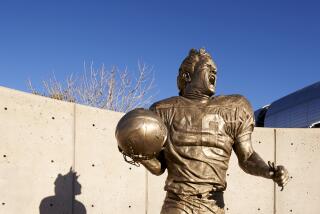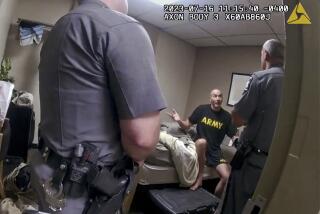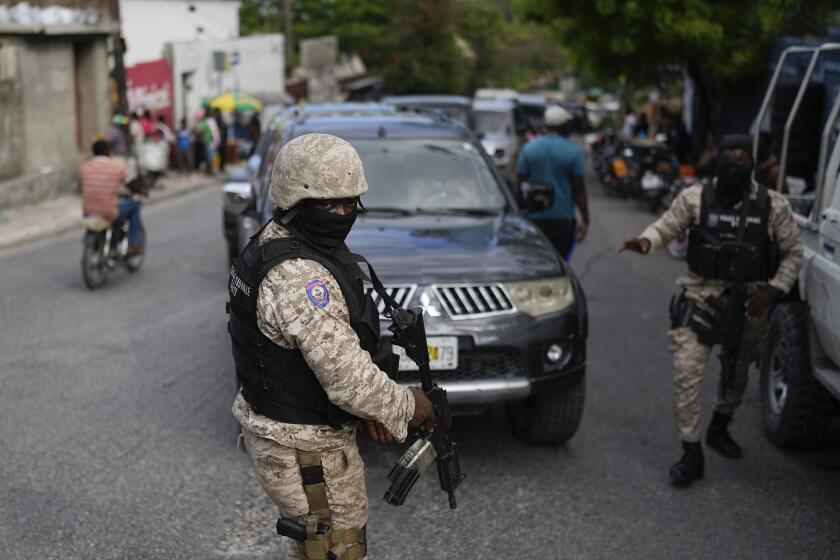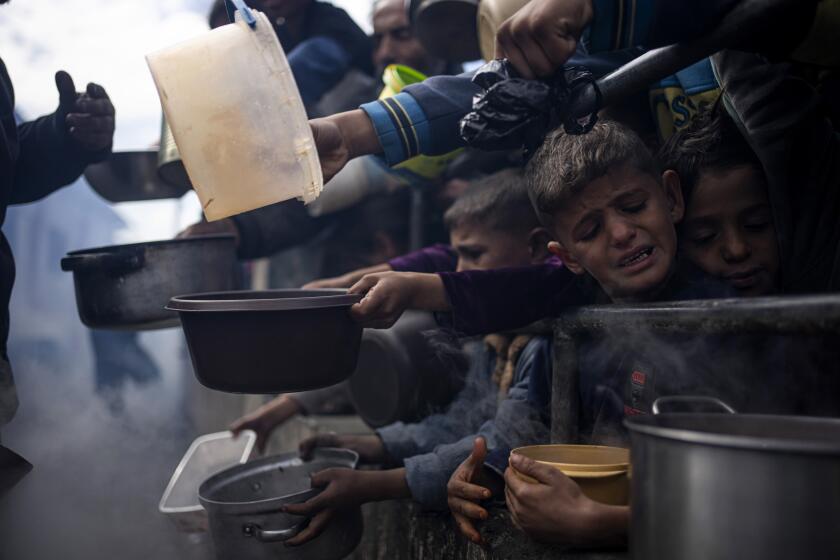Ft. Hood shooting: ‘It happened right in front of me’
FT. HOOD, Texas — As soon as Suzy Sanders got word of the shooting at Ft. Hood on Wednesday, she began frantically texting her 21-year-old stepson, a soldier stationed at the Army post.
His first chilling reply landed more than an hour later, at 5:22 p.m.
“It happened right in front of me Suz,” Pvt. Jacob “Jake” Sanders texted. “I watched my sergeant die. I tried to revive him. I’m fine. I love you.”
Jake Sanders, a former varsity basketball player from a small town in Indiana, has a brown crew cut, square jaw and wide smile. He told his father he is among four survivors expected to be honored when President Obama attends a Wednesday memorial here. He said the others included a chaplain who helped save soldiers and a military police officer who confronted the shooter.
Military officials said an awards ceremony was not part of the memorial program, but they would not comment on the president’s plans in advance. They have not allowed Sanders or other witnesses to speak publicly. But the soldier recounted his experience by phone to his father, Greg Sanders, 41, back in Madison, Ind., who shared the conversation with The Times.
Jake Sanders told his father he saw the gunman enter the office that afternoon with a .45-caliber Smith & Wesson pistol drawn. Spc. Ivan Lopez had recently joined Sanders’ unit. Sanders knew Lopez, 34, as a quiet soldier who mostly kept to himself.
A few other soldiers were in the room, but Sanders was the closest. He stood about five feet away as Lopez approached their boss, Sgt. Timothy Wayne Owens.
Owens, 37, a gruff leader from southern Illinois, was known as “Sgt. O” to his troops. He reminded Sanders of his high school basketball coach.
Sanders watched as Owens attempted to reason with Lopez.
“Sgt. Owens tried to verbally talk him down, and that’s when the shot was fired,” said Greg Sanders.
At least one bullet struck Owens, who tumbled to the floor.
“It happened so fast, before he knew it, Sgt. O was on the ground,” the father said.
Sanders rushed to his sergeant. He had trained as a medic, and began administering CPR. He was soon covered in blood, his fatigues and boots so soaked he would later have to throw them away. Paramedics arrived, and when they left, his sergeant was still alive.
Military police arrived soon after. Sanders was so stunned he could hardly speak.
“The emotion took over,” his father said.
They took Sanders and other witnesses to speak with investigators at the Army Criminal Investigation Division.
Unbeknown to Sanders, Lopez drove to two other buildings during his eight-minute rampage, firing more than 35 rounds. Afterward, he fled to a nearby parking lot where he was confronted by a female military police officer, who fired once at him. The bullet did not strike Lopez, who shot himself in the head.
Owens died at the hospital.
The attack left 16 injured and two additional people dead: Sgt. 1st Class Daniel Michael Ferguson, 39, of Mulberry, Fla., and Staff Sgt. Carlos Alberto Lazaney-Rodriguez, 38, of Aguadilla, Puerto Rico. Their bodies were being transported to their homes this week, according to the post’s operations chief, Col. Paul Reese.
On Monday, Chris Grey, a spokesman for the Army Criminal Investigation Division, said investigators believed Lopez acted alone, and that he began shooting after arguing with officials about his request for a leave.
A law enforcement source told The Times that Lopez had just heard that his superiors had rejected his request to take a temporary leave related to the death of his mother, infuriating him.
Grey said officials still had not identified a motive for the shooting. “We may never know why,” he said.
The attack came more than four years after another mass shooting at Ft. Hood, the deadliest at a U.S. military base.
In that attack, Army psychiatrist Maj. Nidal Malik Hasan killed 13 people and wounded more than 30 others in an effort he said was to protect the Taliban. Last year, Hasan was convicted and sentenced to death.
Victims of that shooting spoke about survivors’ guilt and frustration that they couldn’t do more for comrades who died before their eyes.
Jake Sanders has also been wondering whether he could have saved his sergeant.
“He felt a lot of guilt because he couldn’t do more,” his father said. “That’s been tough on him.”
On Saturday, Sanders met Owens’ widow for dinner. He visited some of the five shooting victims he knows who were still hospitalized. Three were in fair condition, the other two were improving, military officials said.
The rest of the injured have returned to duty.
The shooting has shaken the community, the nation’s largest Army post with a daily population of 100,000. But Sanders and some of the other survivors had told their families that they were determined to keep pursuing military careers.
Outgoing and adventurous, Sanders loves the military structure. After graduating from Shawe Memorial High School in 2011, he spent a year at Ball State University in Muncie, Ind., before enlisting.
His decision had surprised his father, a sales manager at a Chevrolet dealership, who did not serve. But he was proud his son chose to stay at Ft. Hood, which he said showed the strength of his character.
The memorial is scheduled for 2 p.m. Wednesday at the post’s Sadowski Field, which will be open to soldiers and their families. Obama is expected to speak, as he did at the memorial after the 2009 shooting, his last visit to the post. On Monday, military officials were already boosting security in preparation for the president’s arrival, piling protective barriers around their headquarters.
But when Sanders told his father about the memorial, he was more preoccupied with the loss of his sergeant than the prospect of meeting Obama and receiving an award.
“It’s not about us,” Sanders wrote in a text. “It’s about the ones who died and were injured. And we hope it stays that way.”
molly.hennessy-fiske@latimes.com
More to Read
Start your day right
Sign up for Essential California for news, features and recommendations from the L.A. Times and beyond in your inbox six days a week.
You may occasionally receive promotional content from the Los Angeles Times.







